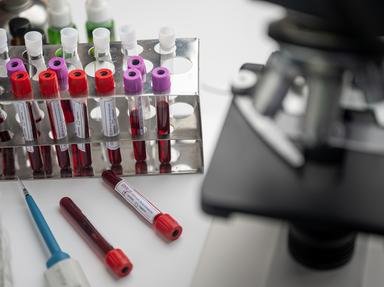Quiz Answer Key and Fun Facts
1. It has often been said that raw oysters are an aphrodisiac, and as such were the staple of Casanova's breakfast. While many consider this to be an urban legend, some in the scientific community started to seriously consider this link after finding that bivalve molluscs were remarkably abundant in NMDA and D-Asp. Why was this a significant finding?
2. In the brain, a molecule known as adenosine binds to receptor proteins on excitatory nerve synapses, inhibiting them and thus making us feel sleepy. After your cup of coffee in the morning, this tiredness may be lifted. This is due to caffeine. How does caffeine "perk us up"?
3. Phenethylamine is a chemical in the brain which is linked to feelings of love and attraction, and it just happens to be found in chocolate! However, the course of true love never did run smooth. What is the problem here?
4. You may have been told as a child that eating your carrots will help you see in the dark. Indeed, carrots do appear to be good for our vision. They contain beta-carotene, which is metabolised by our bodies into a molecule that combines with opsin to form rhodopsin, the light sensitive pigment in our retinas. What is this molecule?
5. Many people you know may be lactose-intolerant, meaning they can become ill if they consume milk or other dairy products. The reason for this is a lack of an enzyme called lactase, which breaks lactose (the sugar found in milk) into simpler sugars. Which two monosaccharaides join together to make lactose?
6. If hot chilies aren't for you, you can blame capsaicin. Capsaicin is the active ingredient in chilies that binds to the tongue's vanilloid receptor (VR1), which opens and allows ions to flow through it, eventually leading to a nerve impulse which is usually associated with heat/pain. With this in mind, what type of protein is VR1?
7. I often turn into a teary wreck in the kitchen, and it's always due to one particular food - onions. Chopping onions releases enzymes which break down molecules found in the onion, eventually producing propanethiol S-oxide. This propanethiol S-oxide combines with the water in our eyes to produce a rather nasty chemical which is what causes our eyes to sting. Which chemical is this?
8. We've all been to a barbeque where a small, charred sausage remains, unwanted and unloved. However, you may be wise to avoid this and other burnt foods, since these contain chemicals called heterocyclic amines. Why is it worth avoiding these burnt foods?
9. How many times have I told you to eat your greens? It has been found that most people have genes which code for a protein that detects glucosinolates - the compound which makes broccoli and Brussels sprouts taste bitter. These genes are thought to have a greater influence in children than in adults (figures!). What does this tell us about genes?
10. Most of us will be familiar with the effects of alcohol. The ethanol in the beer and wine we drink exerts its effects by interfering with the normal function of the brain. What, specifically, does ethanol do to our brain?
Source: Author
doublemm
This quiz was reviewed by FunTrivia editor
WesleyCrusher before going online.
Any errors found in FunTrivia content are routinely corrected through our feedback system.
